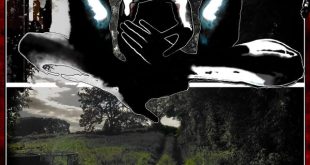Thelonious Monk (1917-1982) is recognized as one of the giants of American jazz music. One of his classic albums has now been reissued as a part of the Legacy Jazz Classics Remasters series. He is joined by Art Blakey’s Jazz Messengers, Ella Fitzgerald and Oscar Peterson, and Cal Tjader/Stan Getz Sextet, which is good company indeed. The series has reached the one-year mark and continues to resurrect and release some of the most important albums in American music history.
Monk’s recording career reaches back to the 1940s. By the mid-1950s, he had compiled an impressive catalogue of work, which had received critical acclaim within the jazz community. The commercial results were moderate, as his use of dissonant notes and odd melodic shifts did not appeal to a broad spectrum of music buyers. That all changed during his time recording for the Riverside Label, 1955-1961.
Monk’s Music was recorded during June of 1957, and while it is instantly recognizable as classic Thelonious Monk, his sound had moved just enough toward the mainstream to make it and the albums which followed, commercial successes, and push Monk to the top of the American jazz hierarchy.
Monk is joined by one of the most impressive backing groups in jazz history. Trumpeter Ray Copeland, alto saxophonist Gigi Gryce, tenor saxophonists John Coltrane and Coleman Hawkins, bassist Wilbur Ware, and drummer Art Blakey were some of the best musicians in the world at the time.
The album begins with the short “Abide With Me,” which is one of the most unusual in the Monk catalogue. It consists just of the four horn players joining together on this old hymn.
Monk reached back to 1947 for “Well You Needn’t.” The song is extended out to over 11 minutes which allows everyone to provide solos. “Ruby, My Dear” is another song Monk first recorded in 1947 with a trio. The original composition went back to his teen years and is one of the more melodic tunes he would produce.
“Off Minor (Take 6)” was first recorded during the late 1940s by Bud Powell. Monk, Copeland, and Hawkins all take solos. They recorded the song six times while in the studio and take four was used on the album.
“Epistrophy” is another old tune that was resurrected for this album. The extended solos by Copeland and Coltrane are worth the price of admission. “Crepuscule With Nellie (Take 6)” is another unique track as it is a structured song with little improvisation. It places the emphasis on Monk’s brilliance as a songwriter.
There are three bonus tracks. “Off Minor (Take 4)” and “Crepuscule With Nellie (Takes 4 and 5)” are interesting to compare with the versions that appear on the original release. The third bonus track was recorded without Monk. He was exhausted and not up to playing, but paid for studio time that remained. Minus the piano, the remaining musicians created the hard bop piece, “Blues For Tomorrow.”
Monk’s Music is a fine addition to the Original Jazz Classics Remasters series. The sound is pristine, the original liner notes are intact, and the new notes by Ashley Kahn shed light on the participants and music. It is an essential addition to any jazz collection.
 Blogcritics The critical lens on today's culture & entertainment
Blogcritics The critical lens on today's culture & entertainment



